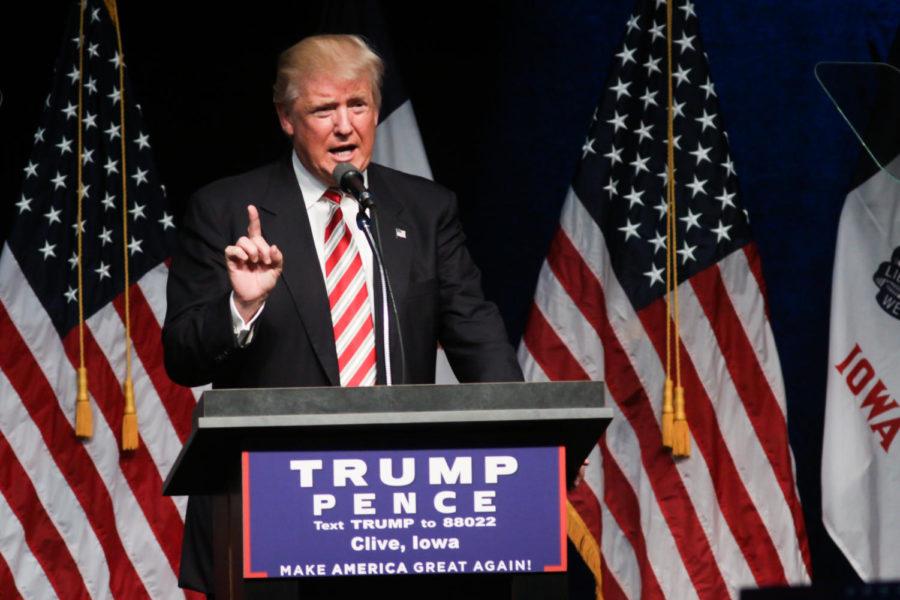Wright: Federal hiring freeze an unrealistic solution
Republican presidential nominee Donald Trump speaks at a rally Sept. 13 in Clive, Iowa. Trump spoke on a variety of topics, ranging from his opponent Hillary Clinton, to repealing Obamacare and getting rid of the Common Core education system.
February 1, 2017
President Donald Trump ordered a federal hiring freeze on all civilian employees Jan. 23 that will continue for an indefinite amount of time. This partially makes good on a campaign promise to cut unnecessary spending and an attempt to encourage government agencies to restructure for a more streamlined framework. My argument will show the impracticality of this specific legislation and criticize the misplaced sentiment that has brought it such popularity.
While such a broad approach to limiting spending seems outlandish, this certainly isn’t the first time this has happened. Former President Ronald Reagan instituted a hiring freeze on his first day of office, and former President Jimmy Carter put in place three federal hiring freezes during his one term in office. No specific hiring freeze can be correlated with government shortages, just as no hiring freeze has led to a significant drop in government employees.
This is partially due to the temporary nature of presidential memorandums like this. After 90 days, the incoming Office of Management and Budget director will reassess the memorandum and provide guidance regarding the freeze to the executives of all federal agencies. As U.S. Rep. Mick Mulvaney, the current nominee for the position, stated during his congressional hearing, he doesn’t agree with the move, claiming that there would certainly be instances where hiring more people could lead to a more cost-effective government.
Not only is such an approach too minimal and short-term to effectively decrease hiring, it’s likely that after all is said and done, the total number of employees will be higher than before. Since October, federal job growth has received a sharp uptick in response to Trump’s promises for a hiring freeze. Although the job spike isn’t significant, it’s unlikely that agencies will let these people go once the Office of Management and Budget assuages fears of future cuts.
This memorandum is already much less firm than it was when drafted a week ago. Fifty-five members of Congress called on the president to exempt the Department of Veterans Affairs, which already has difficulty staffing its medical centers. Soon after, the National Cemetery Administration also was exempted. These exemptions follow a clause in Trump’s memorandum that allows department heads to deem what positions are necessary. While many are concerned about departments abusing this loophole, this hasn’t definitely occurred yet.
One issue with this approach to spending decreases is that new federal hires in no way account for most of the federal spending. In fact, federal payroll and benefits are as low as 10 percent. Jobs also haven’t grown significantly in recent history; we have about a million fewer federal jobs than we did in 1960.
These figures begin to highlight a serious issue about public spending. Many people take issue with excessive government spending and see redundant jobs as a major source of that. When asked about government spending being excessive, many feel strongly that government spending is in fact excessive, but when asked as to whether spending should be cut for each specific department, sentiment usually shows support for most federal divisions. Furthermore, government spending has increased less in the last eight years than it did at any point during the previous 60.
It’s easy to say that the government is spending too much. Even hard-line progressives will hesitate to criticize such a claim. And disproving it is one of those things that can never be done definitively.
Just as the conservative nominee for the Office of Management and Budget was willing to admit that sometimes the primary need for government is to grow, it’s important to remember that government is full of inefficiencies. But unless you can actually prove the existence of a problem and actually intend to solve a tangible issue, just saying that things need to get better is just as bad as pretending as if everything is OK.
















